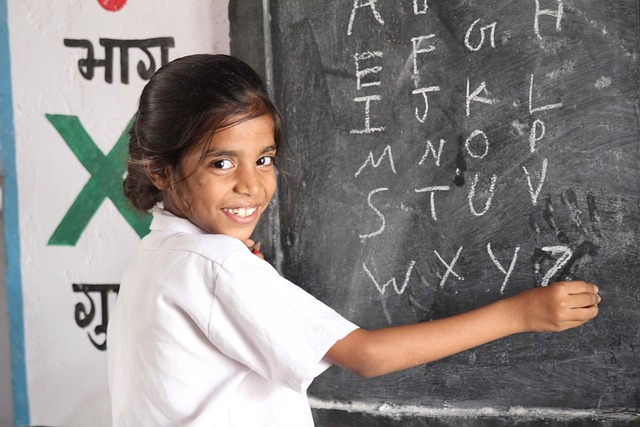2023考研英语阅读经典试题及答案

SAMPLE 25
[动物学类]
Investigators of monkeys social behavior have always been struck by monkeys aggressive potential and the consequent need for social control of their aggressive behavior. Studies directed at describing aggressive behavior and the situations that elicit it, as well as the social mechanisms that control it, were therefore among the first investigations of monkeys social behavior.
Investigators initially believed that monkeys would compete for any resource in the environment: hungry monkeys would fight over food, thirsty monkeys would fight over water, and, in general, at time more than one monkey in a group sought the same incentive simultaneously, a dispute would result and would be resolved through some form of aggression. However, the motivating force of competition for incentives began to be doubted when experiments like Southwicks on the reduction of space or the withholding of food failed to produce more than temporary increases in intragroup aggression. Indeed, food deprivation not only failed to increase aggression but in some cases actually resulted in decreased frequencies of aggression.
Studies of animals in the wild under conditions of extreme food deprivation likewise revealed that starving monkeys devoted almost all available energy to foraging, with little energy remaining for aggressive interaction. Furthermore, accumulating evidence from later studies of a variety of primate groups, for example, the study conducted by Bernstein, indicates that one of the most potent stimuli for eliciting aggression is the introduction of an intruder into an organized group. Such introductions result in far more serious aggression than that produced in any other types of experiments contrived to produce competition.
These studies of intruders suggest that adult members of the same species introduced to one another for the first time show considerable hostility because, in the absence of a social order, one must be established to control interanimal relationships. When a single new animal is introduced into an existing social organization, the newcomer meets even more serious aggression. Whereas in the first case aggression establishes a social order, in the second case resident animals mob the intruder, thereby initially excluding the new animal from the existing social unit. The simultaneous introduction of several animals lessens the effect, if only because the group divides its attention among the multiple targets. If, however, the several animals introduced a group constitute their own social unit, each group may fight the opposing group as a unit; but, again, no individual is subjected to mass attack, and the very cohesion of the groups precludes prolonged individual combat. The submission of the defeated group, rather than unleashing unchecked aggression on the part of the victorious group, reduces both the intensity and frequency of further attack. Monkey groups therefore seem to be organized primarily to maintain their established social order rather than to engage in hostilities per se.
1. The author of the text is primarily concerned with
[A] advancing a new methodology for changing a monkeys social behavior.
[B] comparing the methods of several research studies on aggression among monkeys.
[C] explaining the reasons for researchers interest in monkeys social behavior.
[D] discussing the development of investigators theories about aggression among monkeys.
2. Which of the following best summarizes the findings reported in the text about the effects of food deprivation on monkeys behavior?
[A] Food deprivation has no effect on aggression among monkeys.
[B] Food deprivation increases aggression among monkeys because one of the most potent stimuli for eliciting aggression is the competition for incentives.
[C] Food deprivation may increase long-term aggression among monkeys in a laboratory setting, but it produces only temporary increase among monkeys in the wild.
[D] Food deprivation may temporarily increase aggression among monkeys, but it also leads to a decrease in conflict.
3. The text suggests that investigators of monkeys social behavior have been especially interested in aggressive behavior among monkeys because
[A] aggression is the most common social behavior among monkeys.
[B] successful competition for incentives determines the social order in a monkey group.
[C] situation that elicit aggressive behavior can be studied in a laboratory.
[D] most monkeys are potentially aggressive, yet they live in social units that could not function without control of their aggressive impulses.
4. The text supplies information to answer which of the following questions?
[A] How does the reduction of space affect intragroup aggression among monkeys in an experimental setting?
[B] Do family units within a monkey social group compete with other family units for food?
[C] What are the mechanisms by which the social order of an established group of monkeys controls aggression within that group?
[D] How do monkeys engaged in aggression with other monkeys signal submission?
5. Which of the following best describes the organization of the second paragraph?
[A] A hypothesis is explained and counter evidence is described.
[B] A theory is advanced and specific evidence supporting it is cited.
[C] Field observations are described and a conclusion about their significance is drawn.
[D] Two theories are explained and evidence supporting each of them is detailed.
SAMPLE 25
[动物学类]
Investigators of monkeys social behavior have always been struck by monkeys aggressive potential and the consequent need for social control of their aggressive behavior. Studies directed at describing aggressive behavior and the situations that elicit it, as well as the social mechanisms that control it, were therefore among the first investigations of monkeys social behavior.
Investigators initially believed that monkeys would compete for any resource in the environment: hungry monkeys would fight over food, thirsty monkeys would fight over water, and, in general, at time more than one monkey in a group sought the same incentive simultaneously, a dispute would result and would be resolved through some form of aggression. However, the motivating force of competition for incentives began to be doubted when experiments like Southwicks on the reduction of space or the withholding of food failed to produce more than temporary increases in intragroup aggression. Indeed, food deprivation not only failed to increase aggression but in some cases actually resulted in decreased frequencies of aggression.
Studies of animals in the wild under conditions of extreme food deprivation likewise revealed that starving monkeys devoted almost all available energy to foraging, with little energy remaining for aggressive interaction. Furthermore, accumulating evidence from later studies of a variety of primate groups, for example, the study conducted by Bernstein, indicates that one of the most potent stimuli for eliciting aggression is the introduction of an intruder into an organized group. Such introductions result in far more serious aggression than that produced in any other types of experiments contrived to produce competition.
These studies of intruders suggest that adult members of the same species introduced to one another for the first time show considerable hostility because, in the absence of a social order, one must be established to control interanimal relationships. When a single new animal is introduced into an existing social organization, the newcomer meets even more serious aggression. Whereas in the first case aggression establishes a social order, in the second case resident animals mob the intruder, thereby initially excluding the new animal from the existing social unit. The simultaneous introduction of several animals lessens the effect, if only because the group divides its attention among the multiple targets. If, however, the several animals introduced a group constitute their own social unit, each group may fight the opposing group as a unit; but, again, no individual is subjected to mass attack, and the very cohesion of the groups precludes prolonged individual combat. The submission of the defeated group, rather than unleashing unchecked aggression on the part of the victorious group, reduces both the intensity and frequency of further attack. Monkey groups therefore seem to be organized primarily to maintain their established social order rather than to engage in hostilities per se.
1. The author of the text is primarily concerned with
[A] advancing a new methodology for changing a monkeys social behavior.
[B] comparing the methods of several research studies on aggression among monkeys.
[C] explaining the reasons for researchers interest in monkeys social behavior.
[D] discussing the development of investigators theories about aggression among monkeys.
2. Which of the following best summarizes the findings reported in the text about the effects of food deprivation on monkeys behavior?
[A] Food deprivation has no effect on aggression among monkeys.
[B] Food deprivation increases aggression among monkeys because one of the most potent stimuli for eliciting aggression is the competition for incentives.
[C] Food deprivation may increase long-term aggression among monkeys in a laboratory setting, but it produces only temporary increase among monkeys in the wild.
[D] Food deprivation may temporarily increase aggression among monkeys, but it also leads to a decrease in conflict.
3. The text suggests that investigators of monkeys social behavior have been especially interested in aggressive behavior among monkeys because
[A] aggression is the most common social behavior among monkeys.
[B] successful competition for incentives determines the social order in a monkey group.
[C] situation that elicit aggressive behavior can be studied in a laboratory.
[D] most monkeys are potentially aggressive, yet they live in social units that could not function without control of their aggressive impulses.
4. The text supplies information to answer which of the following questions?
[A] How does the reduction of space affect intragroup aggression among monkeys in an experimental setting?
[B] Do family units within a monkey social group compete with other family units for food?
[C] What are the mechanisms by which the social order of an established group of monkeys controls aggression within that group?
[D] How do monkeys engaged in aggression with other monkeys signal submission?
5. Which of the following best describes the organization of the second paragraph?
[A] A hypothesis is explained and counter evidence is described.
[B] A theory is advanced and specific evidence supporting it is cited.
[C] Field observations are described and a conclusion about their significance is drawn.
[D] Two theories are explained and evidence supporting each of them is detailed.









